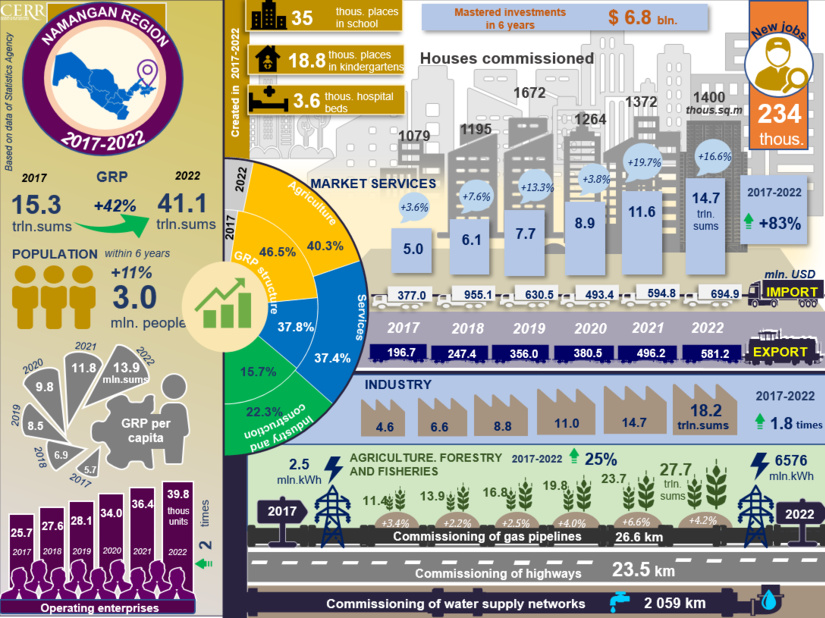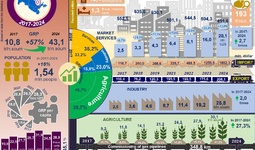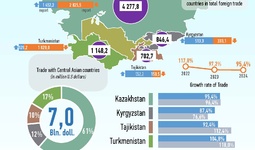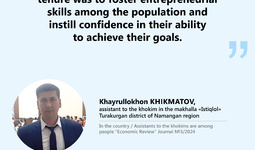Experts of the Center for Economic Research and Reforms presented the main changes in the socio-economic development of active reforms that took place in the region in 2017-2022.
In 2017-2022, the gross regional product (GRP) of the region increased from 15.3 trillion sums up to 41.1 trillion sums, and its real volume increased by 42%. This, in turn, ensured the growth of GRP per capita from 5.7 million sums to 13.9 million sums. During this period, the population of the region increased by 11% and reached 3.0 million people.
As a result of the effective use of the industrial potential of the region, the volume of industrial production during this period increased from 4.6 trillion sums up to 18.2 trillion sums or 80%, which made a great contribution to the stable development of the region's economy. The share of industry and construction in the GRP of the region increased from 15.7% to 22.3%.
As a result of actions aimed at fully satisfying the demand for modern and household services, the volume of market services has increased significantly, from 5 trillion sums up to 14.7 trillion sums, or 83%. And the volume of agricultural, forestry and fisheries production in the region increased by 25% and reached 27.7 trillion sums.
Thanks to measures aimed at liberalizing foreign trade, supporting and stimulating the export activities of business entities, the volume of exports of the region reached $581.2 million and has increased 3 times over the past 6 years.
During the same period, measures aimed at further improving the business environment in the region and supporting business entities have made it possible to master $6.8 billion of investments. As a result, the number of enterprises operating in the region increased 2 times to 39.8 thousand and about 234 thousand new jobs were created.
In order to improve the living conditions of the population over the past 6 years, 23.5 km of highways, 26.6 km of gas and 2059 km of drinking water supply networks have been put into operation.
Special attention was paid to the construction of new social infrastructure facilities, 7,982,000 square meters of housing, 18,800 preschool educational institutions, 35,000 places in schools and 3,600 hospital beds were put into operation.
Center for Economic Research and Reforms





















leave a comment